• How to choose a multivitamin

• Herbs to support lung health
• Cold & flu fighters

• How to choose a multivitamin

• Herbs to support lung health
• Cold & flu fighters
One of the world’s oldest known crops, butternut squash is a type of winter squash with bright orange flesh wrapped in a pale orange skin. More pear-shaped than its cousin the pumpkin, butternut squash has a mild, slightly sweet flavor.
A 1-cup serving of cooked butternut squash has just 82 calories, but more than 100 percent of the daily requirement of vitamin A (in the form of carotenoids), an important nutrient for the immune system. It’s also a great source of antioxidants lutein and zeaxanthin, which support eye health. Butternut squash’s dietary fiber may help with weight management, blood sugar control, and a lower the risk of developing colorectal cancer.
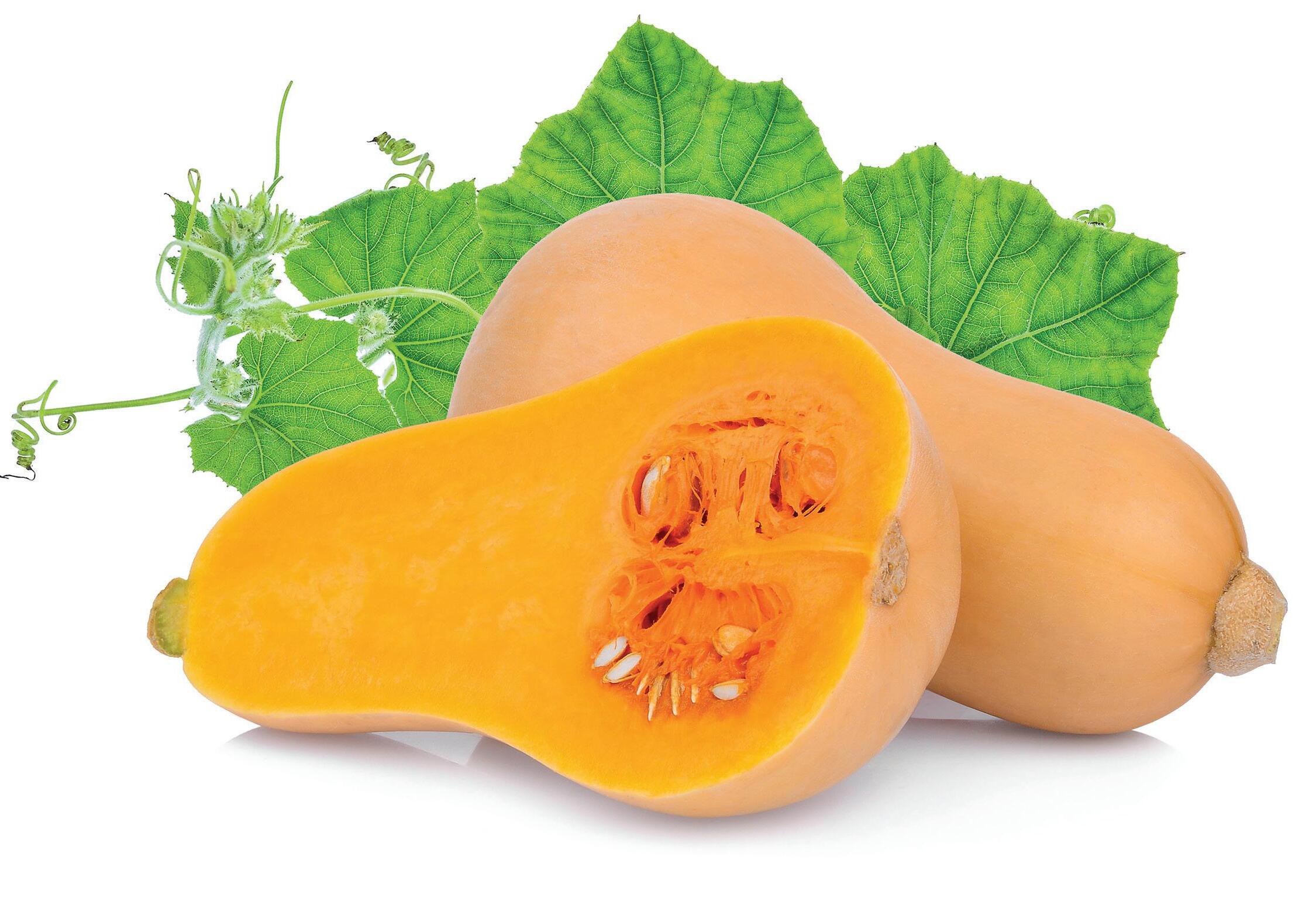
Because of its thick, inedible skin, butternut squash can be a little tricky to peel. Cutting a thin slice off the top and bottom will stop the squash
from rolling around—a sharp knife or peeler will also make the job easier. After the seeds are scooped out, butternut squash can be baked, boiled, mashed, or roasted—the possibilities are endless. Butternut squash is great blended in soups or cubed and baked before adding to grain bowls or salads. ●
SELECTED SOURCES “Butternut squash,” University of Massachusetts Center for Agriculture, Food, and the Environment, https://ag.umass.edu • “Everything you should know about the benefits of squash” by Amber Sommer, Cleveland Clinic Health Essentials, https://health.ClevelandClinic.org, 3/31/23 • “Health benefits of butternut squash” by Angela Nelson, www. WebMD.com, 6/5/23 • “Winter squash,” Nutrition Source, Harvard T.H. Chan School of Public Health, www.hsph.harvard.edu, 2023




While many parts of the country don’t have colorful autumn leaves, everyone can share in the rich colors of this season’s crop of beautiful vegetables.
What better way to begin this issue than with butternut squash? It’s a nutrition powerhouse that stars in creamy, delicious soups and many other dishes (page 2). That’s followed closely by a pumpkin risotto recipe, just in time for Halloween cooking (page 5).
Looking ahead to winter, it’s a good time to take stock of the nutrients that feed the body. Whether or not you eat as healthfully as you should every day, you may be considering adding a multivitamin to your nutrition plan. You’ll find what to look for—and what to avoid—on page 17.
If it’s October, cold and flu season must not be far behind. Be sure to check out our tips for fighting off winter’s ills (page 18). Read about herbs that support lung health on page 24. And then breathe deeply and relax with a tasty, comforting cup of tea (page 20).
As fall and winter bring dark days, seasonal affective disorder (aptly abbreviated “SAD”) may come to call. Learn about this type of depression and what you can do to ease its symptoms (page 22).
The autumn kitchen is full of hearty meals. Check out this month’s “Pasta Possibilities,” beginning on page 12, and “Seafood Suppers” in our cook-at-home department on page 26.
We have everything you need for a Halloween celebration that bypasses junk food for nutritious and fun snacks (page 29).
Wishing you a healthy, happy fall season—
Mary Ann O’Dell, MS, RDN
Contributing Writers
Mary Ann O’Dell MS, RDN
Sally Karlovitz CN
Chief Content Officer and Strategist
Lynn Tryba (Lynn.Tryba@TasteforLife.com)
Contributing Editors
Lisa Fabian, Rich Wallace
Associate Editor
Kelli Ann Wilson
Art Director
Michelle Knapp
Custom Graphics Manager
Donna Sweeney
Chief Marketing and Business Development Officer
Amy Pierce
Customer Service 800-677-8847
CustomerService@TasteforLife.com
Client Services Director - Retail Judy Gagne (x128)


Client Services Director - Advertising & Digital Ashley Dunk (x190)
Vice President – Retail Sales and Strategic Partnerships
Anna Johnston (Anna.Johnston@TasteforLife.com)
Founder and Chief Executive Officer
T. James Connell
Taste for Life® (ISSN 1521-2904) is published monthly by CCI, 155 Washington Street, Keene NH 03431, 603-283-0034 (fax 603-283-0141); © 2023 Connell Communications, Inc. All rights reserved. Subscription rates: $29.95. This magazine is not intended to provide medical advice on personal health conditions, nor to replace recommendations made by health professionals. The opinions expressed by contributors and sources quoted in articles are not necessarily those of the editor or the publisher. Advertisers and advertising agencies assume liability for all content of advertising and for any claims arising therefrom. Information appearing in Taste for Life may not be reproduced in whole or in part without express permission of the publisher.

Creative and Sales Offices
Nutritional analysis from Edamam. Nutritional values vary depending on portion size, freshness of ingredients, storage, and cooking techniques. They should be used only as a guide. Star ratings are based on standard values (SVs) that are currently recommended:
★★★★★ Extraordinary (50 percent or better), ★★★★ Top source,
★★★ Excellent source, ★★ Good source, ★ Fair source

155 Washington Street, Keene NH 03431 603-283-0034 Disclaimer

*These statements have not been evaluated by the FDA. These products are not intended to diagnose, treat, cure, or prevent any disease.

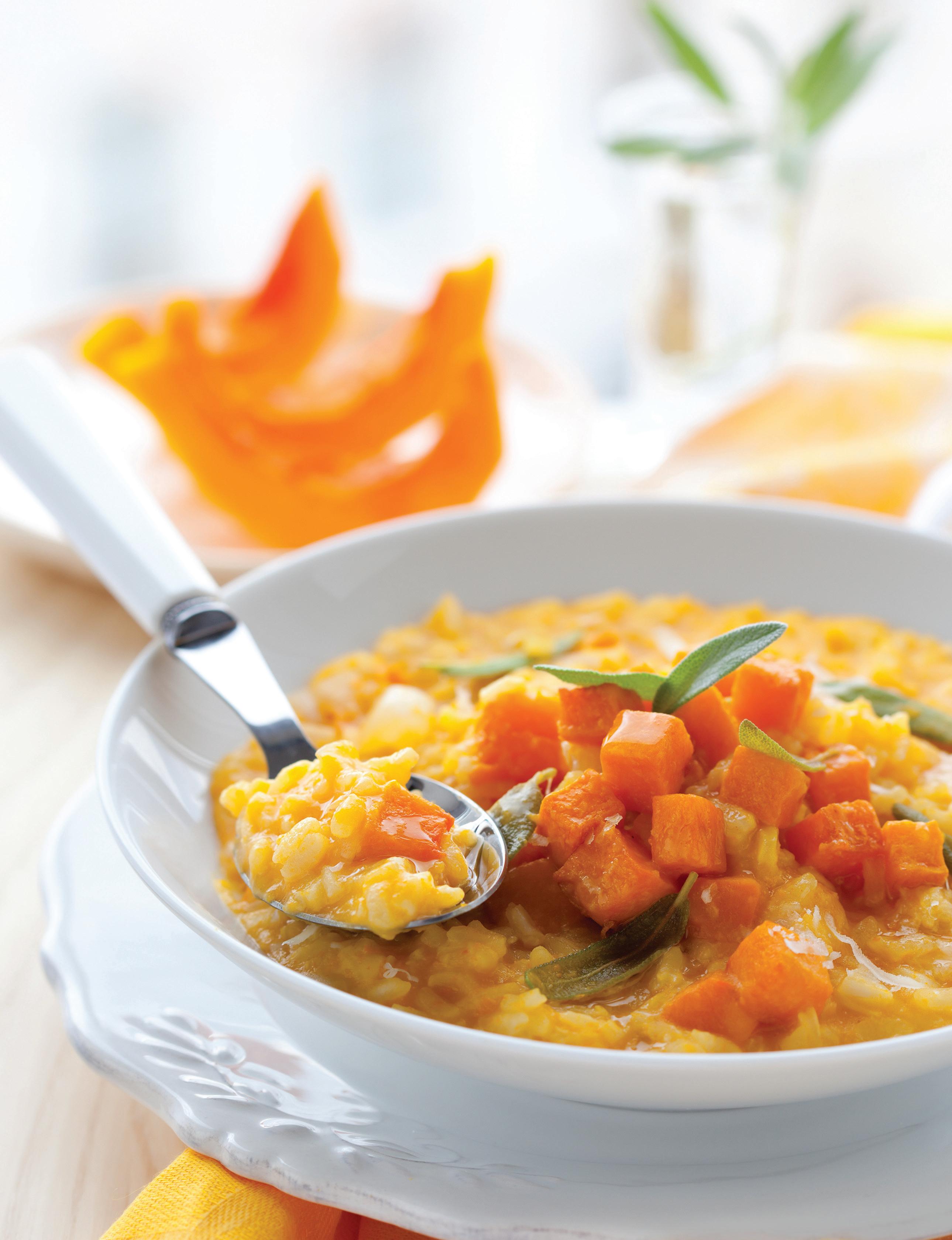
From the Taste for Life test kitchen
½ lb fresh pumpkin
3 c low-sodium chicken broth
1 Tbsp unsalted butter
1 Tbsp olive oil
1 c Arborio rice
1 shallot, minced
½ c grated Parmesan cheese
Salt and freshly ground black pepper
4 fresh sage leaves, chopped
40 min prep time serves 4
1. Remove seeds and stringy fiber from pumpkin. Grate flesh until you have about 1 cup.
2. Bring broth to a simmer in a medium saucepan over medium heat. Keep broth at a simmer while making risotto.
3. In a large saucepan, heat butter and oil over medium heat. Add rice and minced shallot. Cook for 2 minutes, stirring until rice becomes slightly translucent. Add pumpkin.
4. Ladle about 1 cup of simmering broth into pan with rice. Stir rice constantly until it absorbs all of broth. Continue adding 1 ladle of broth at a time, stirring rice until all broth is absorbed. (This process should take approximately 20 minutes.) When all broth has been used, stir in cheese. Season with salt and pepper.
5. Serve immediately, garnishing each serving with chopped sage.
Per serving: 358 Calories, 14 g Protein, 20 mg Cholesterol, 47 g Carbohydrates, 2 g Total sugars (0 g Added sugars), 2 g Fiber, 12 g Total fat (5 g sat), 567 mg Sodium, ★★★★★ Folate, ★★★ Vitamin B3 (niacin), Phosphorus, ★★ Vitamin A, B1 (thiamine), Calcium, ★ Vitamin B2 (riboflavin), B6, B12, K, Iron, Zinc

A new Harvard study, COSMOS 2, published in the American Journal of Clinical Nutrition has shown that taking a daily multivitamin for one year was associated with improved memory and cognition equivalent to reversing age-related memory loss by three years.
The randomized clinical trial, which included 3,500 participants aged 60 and over, was the second COSMOS study to show that multivitamins significantly improved brain function—with the “vitamin group” far surpassing the placebo group.
“The benefits of taking a multivitamin were maintained throughout the three years of the study,” says board certified internist Jacob Teitelbaum, MD, who advocates nutritional supplementation as a complement to the standard American diet
and standard medical therapies. “This confirms numerous earlier studies showing that folate (simple folic acid) dramatically lowers dementia risk.” In addition to a daily multivitamin, he recommends supplementing with a good B complex, folate, vitamin D, and magnesium—all with proven efficacy.
Dr. Teitelbaum is one of the world’s leading researchers on effective treatment for chronic fatigue syndrome (CFS) and fibromyalgia. His landmark doubleblind, placebo-controlled study published in the Journal of Chronic Fatigue Syndrome (8:2, 2001) showed profound benefits from nutrition as well as sleep, hormones, treating hidden infections/inflammation, and exercising as able.
“The reason doctors have traditionally been slow to
recommend multivitamins is because their training has been pharmaceutical-focused and sorely deficient in nutritional education. This new COSMOS study is an important step towards setting the record straight—and represents a wakeup call to clinicians, researchers, and media that cover latest medical findings,” he explains.
Additional tips from Dr. Teitelbaum to help save your brain: Light Up Your Life: Research published in Brain and Behavior has shown that simply increasing light exposure (which can be done with a lightbox or sunlight) markedly improved cognitive testing. “The meta-analysis of 12 randomized studies with 766 dementia patients, showed that phototherapy with bright light, as is used for treating Seasonal Affective Disorder, significantly improved cognition,” he
explains. “Lower dementia risk was also associated with other ways of getting vitamin D, a deficiency which has been associated with dementia.”
Come again? Hearing aids are also a powerful tool for reducing dementia risk. According to a UK observational study, untreated hearing loss contributed to a 42 percent increase in dementia risk compared to peers who had no hearing troubles.
Please Pass the Omelet: A study covered in Science Daily found that people who ate diets rich in phosphatidylcholine, found in eggs and other foods, were 28 percent less likely to develop dementia.
Take a Hike: No medication yet invented will reduce dementia risk by 50 percent. However, walking 10,000 steps a day might actually do the trick, according to a study in JAMA Neurology.

Snoring Alert: Tackle sleep apnea, which research published
in Neurology in May 2023 has correlated with loss of brain volume and accelerated Alzheimer’s.
Get Enough Zzzz’s: Harvard research recommends getting at least 6 to 8 hours of sleep per night to reduce the risk of dementia and death.
Eliminate UTIs: From the Journal of Alzheimer’s Disease, it’s important to eliminate silent infections (e.g., UTIs), to prevent cognitive decline.
Choose Pepcid: From JAMA Neurology, avoid PPI acid blockers, which can create as much as a 44 percent higher risk of dementia. Use Pepcid instead.
HRT: More than 2/3 of Alzheimer’s patients are women, which likely correlates with reduced estrogen levels following menopause. Although controversial, female hormone replacement may help slow cognitive changes. A January 2023 study in Alzheimer’s Research and Therapy suggests that hormone
replacement therapy (HRT) could provide needed protection.
Dr. Teitelbaum endorses bioidentical hormones instead of the pharmaceutical version.

The Spice of Life: Curried foods containing turmeric (and the active ingredient curcumin) are promising for reducing Alzheimer’s risk, which is 70 percent lower in India than the US!
Reduce Chronic Pain: Chronic pain is associated with eight years of excess brain aging. “Our published research shows that treating the root causes of pain can often make the pain go away,” says Dr. Teitelbaum. “Just like putting oil in a car makes the oil light go off. And according to research published in the journal Proceedings of the National Academy of Sciences, this unnecessary chronic pain is associated with eight years of excess brain aging.
A new study “provides the strongest evidence to date” of the link between omega-3 fatty acids and lung health, according to the National Institutes of Health. Researchers delved into the antiinflammatory actions of omega 3s and their long-term effect on lung function in a racially diverse group of more than 15,000 US adults. They also looked for similar data in a study of more than half a million European adults.
The researchers found the strongest link for docosahexaenoic
acid (DHA), an omega 3 that is abundant in fatty fish such as salmon, tuna, and sardines. DHA and other omega 3s are readily available in many supplement forms.
SELECTED SOURCES
“Investigating associations of omega-3 fatty acids, lung function decline, and airway obstruction” by B.K. Patchen et al., American Journal of Respiratory and Critical Care Medicine, 7/20/23
• “Omega-3 fatty acids appear promising for maintaining lung health,” NIH/National Heart, Lung and Blood Institute, 7/20/23
Jacob Teitelbaum, M.D., is a board certified internist and author of the popular free iPhone application “Cures A-Z,” which was ranked in the top 10 of all health/wellness downloads on iTunes. Dr. Teitelbaum is the author of the perennial bestseller From Fatigued to Fantastic! (Avery Penguin), which has sold over half a million copies; Pain Free 1-2-3 (McGraw-Hill); Three Steps to Happiness: Healing Through Joy (Deva Press); the Beat Sugar Addiction Now! series (Fair Winds Press); Real Cause, Real Cure (Rodale Press); The Fatigue and Fibromyalgia Solution (Penguin/Avery); and his latest, The Complete Guide to Beating Sugar Addiction (Fair Winds Press, 2015).
A blend of potent extracts and lubricating nutrients now available in a maximum absorption microgel. One liquid gel pack of this formula supplies effective doses of curcumin, omega 3s, collagen precursors, chondroitin, glucosamine, and hyaluronic acid to support joint comfort, performance, and range of motion.*

Get a double boost with this powerful antioxidant combination.* Cinnamon has beneficial effects in supporting healthy blood sugar and insulin levels.* Alpha lipoic acid may help improve glucose transport within the body, making it an important component for energy production and blood sugar support.*
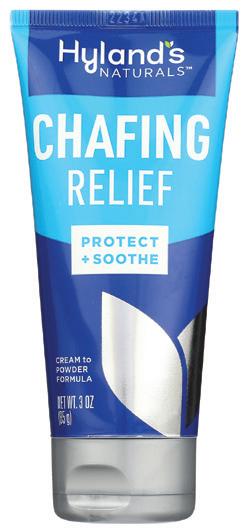
Protect and soothe skin with this unique cream to powder finish. It stays in place before, during, and after exercise to safeguard against chafing, even in water, and with no greasy residue. Natural calendula helps soothe skin for post race relief. Hypoallergenic and paraben free.

Convenience and nutrition packaged in sustainable recyclable paper cartons. These organic, non-GMO, high protein beans are low in sodium and ready to use. Perfect for soups, casseroles, bean dip, taco salads, and more! No preservatives or additives.
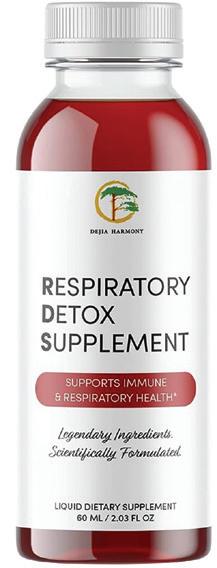
Rooted in Chinese medicine, this natural herbal drink supports your lung’s natural detoxification ability.* With a blend of 10 herbs, including honeysuckle flower, apricot kernel, licorice root, and elderberry, it helps support the body’s response to allergens, increase energy levels, improve digestion and gut health, and boost cognitive function.*

Enjoy this energizing and uplifting blend of organic Lion’s Mane and finely ground Japanese matcha.* For a modern-day spin on an ancestral infusion, mix this smooth, vibrant tea blend with your favorite milk for a fresh start to the day, or a midday pick-me-up.

Give a creamy boost to your morning coffee or smoothie with this unique powder featuring a convenient blend of MCT oil and whey protein concentrate. It offers an easy way to support your keto-friendly lifestyle with an ideal balance of 5g of fat and just 2g of protein per serving.
Chanca Piedra is an Amazon rainforest plant that helps maintain optimal liver, gall bladder, and kidney health.* Traditionally, it has been used for promoting healthy function of kidneys and bladder, and supporting a healthy uric acid level.* Available in liquid extract or capsule form.


For an easy, fun and tasty way to take omega 3s, these gummies offer the perfect balance of omega 3s and flavor. These vegan gummies contain algal oil and ahiflower oil to provide meaningful doses of plantpowered omega-3 fatty acids. Available in Watermelon of Fresh Lemonade flavors.

Unlock the power of Milk Thistle and support your liver health with these tasty sugar free gummies.* Milk Thistle contains antioxidant compounds and supports liver health as well as immune system support.* Natural blueberry flavor and color.
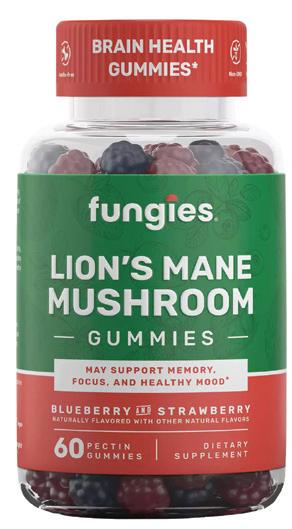
These blueberry- and strawberry-flavored gummies are packed with 500mg of Lion’s Mane mushroom extract that may help support clarity, focus, healthy mood, memory, and overall cognitive performance.* Made from the fruiting body from mushrooms naturally grown on healthy hardwood trees.

This nourishing blend of chlorophyll plus adaptogenic and nutritive herbs enhances a variety of functions in the body. Supplying phytonutrients, vitamins, and minerals, it promotes a healthy inflammatory, immune, and stress response, supports increased energy through cellular oxygenation, and boosts overall well-being.*
Enjoy over 20 nutrient-rich greens and super fruits for a healthy boost in a delicious berry-flavored drink. Packed with green and red fruits and veggies supplying vitamin and minerals for clean energy, selected herbs and botanicals for immune system support, plus enzymes and prebiotic fiber for healthy digestion.*


For a convenient way to take sea moss, these capsules are a perfect choice. This blend of wild crafted sea moss, bladderwrack, and burdock helps support healthy skin and digestion.* Sea moss is also a natural source of iodine, a micronutrient necessary for thyroid health.*
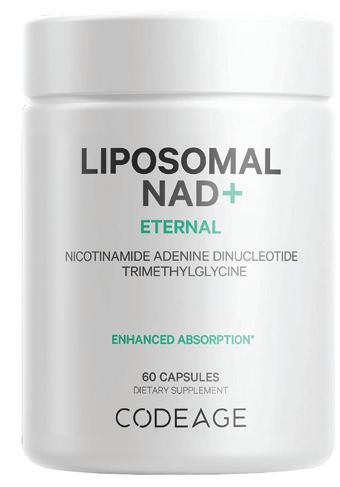
For healthy aging support, this formula supplies Nicotinamide Adenine Dinucleotide (NAD) and betaine anhydrous with liposomal delivery.* NAD coenzyme may play a role in various cellular processes in the body and help support energy production, metabolism, cells, healthy aging, and overall wellness.*
This shot delivers 12 different nutrients to enhance your energy and brain health. Take it every day or just when you need to perform at your peak. The nootropic compounds, vitamins, amino acids, fruit extracts, and herbal extracts work well together in supporting a fast enhancement in mental energy, focus, cognitive processing capacity, and productivity.*

















Trust Kyolic ® for all the days of your life.


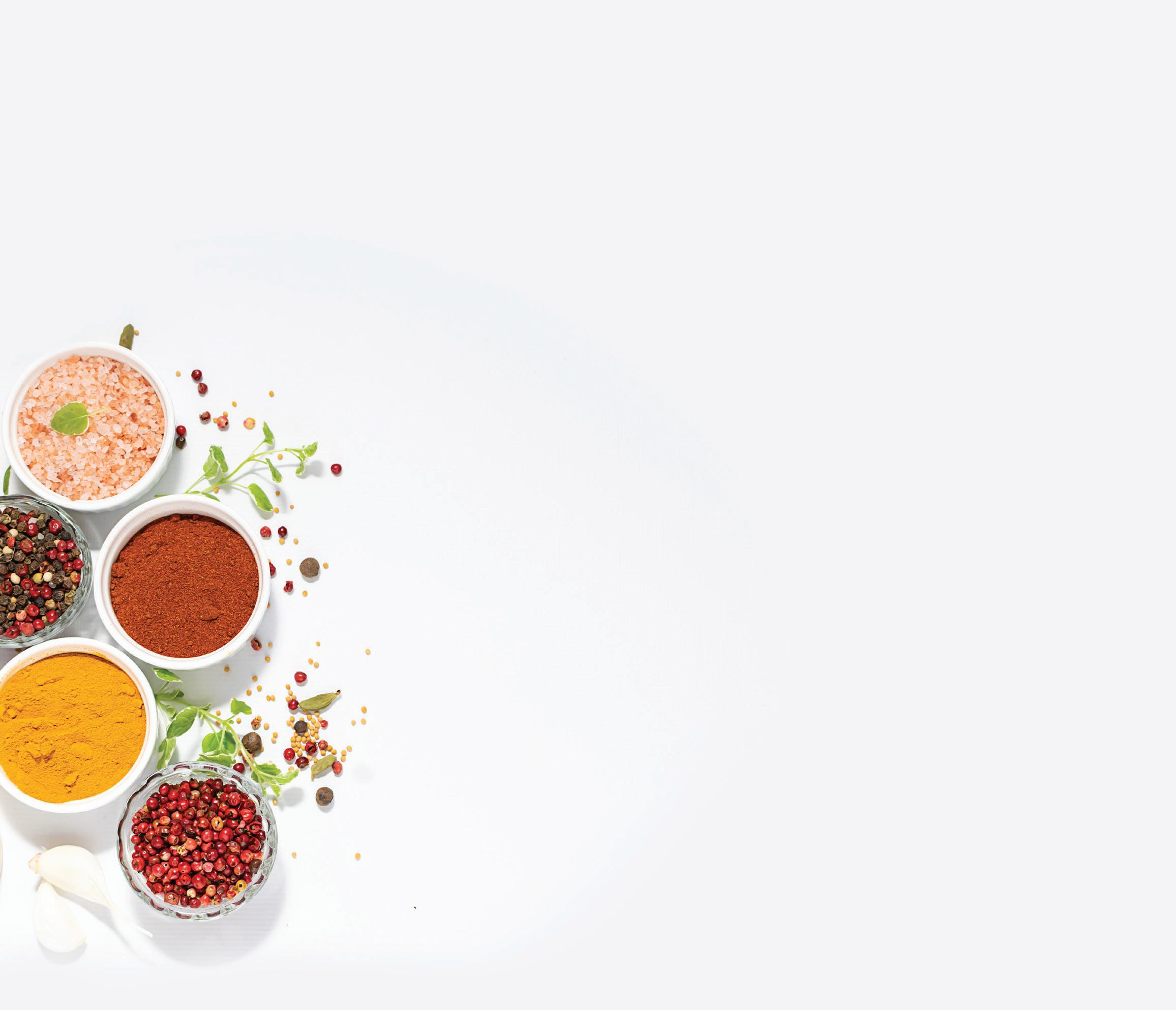
We have over 20 targeted formulas that begin with the healing power of Kyolic ® Aged Garlic Extract™ inspired by nature, backed by science.
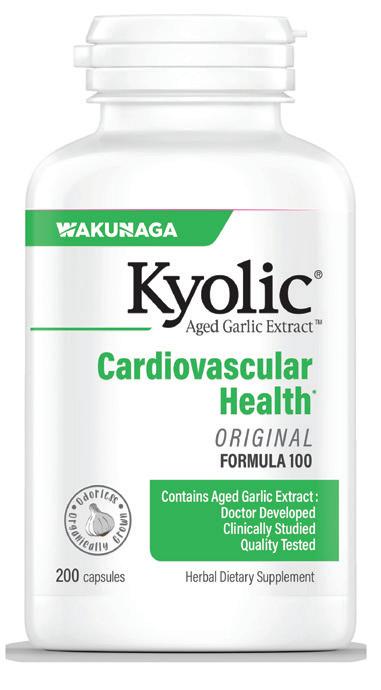
Trust organically grown Kyolic Aged Garlic Extract today so that you can live tomorrow to the fullest.


Good health doesn’t just mean living your best life —it means being there to see the ones you love live theirs.
50 min prep time serves 4
With its lively combination of tender eggplant, robust tomato sauce, al dente pasta, and salty ricotta salata, pasta alla Norma truly does sing with each bite. Leaving the skin on prevents the eggplant from breaking up while cooking. The secret ingredient of anchovies contributes deep savor without adding any fishy flavors. The finished pasta is topped with a generous amount of ricotta salata, a slightly aged, tangy sheep’s-milk cheese that bears little resemblance to the moist fresh ricotta cheese sold in tubs. Since ricotta salata is a semi-hard cheese, shave it or shred it on the large holes of a box grater. If using table salt instead of kosher salt, reduce salt amounts by half.
Recipe on page 13

Recipes featuring pasta can be rustic, traditional, inventive, or elegant, but they’re always comforting. The following dishes feature flavor combinations that may be new to you but are sure to satisfy.
From Fresh Pasta at Home: 10 Doughs, 20 Shapes, 100+ Recipes With or Without a Machine by America’s Test Kitchen ($29.99, America’s Test Kitchen, 2022)
1½ lb eggplant, cut into ½-inch pieces
1 tsp kosher salt, plus salt for cooking pasta
¼ c extra-virgin olive oil, divided
4 garlic cloves, minced 2 anchovy fillets, minced ¼–½ tsp red pepper flakes
1 (28 oz) can crushed tomatoes
6 Tbsp chopped fresh basil
1 lb fresh ziti
3 oz ricotta salata, shredded (1 c)
1. Toss eggplant with 1 teaspoon of salt in a large bowl. Line a large plate with a double layer of coffee filters, and lightly spray with vegetable oil spray. Spread eggplant in an even layer over coffee filters; wipe out bowl with paper towels and set aside. Microwave eggplant until dry to the touch and slightly shriveled, about 10 minutes, tossing halfway through cooking. Let cool slightly.
2. Transfer eggplant to now-empty bowl, drizzle with 1 tablespoon of the oil, and toss gently to coat; discard coffee filters and reserve plate. Heat 1 tablespoon of the oil in a 12-inch nonstick skillet over medium-high heat until shimmering. Add eggplant and cook, stirring every 1½ to 2 minutes (more frequent stirring may cause eggplant pieces to break apart), until well browned and fully tender, about 10 minutes. Transfer eggplant to now-empty plate and set aside. Let skillet cool slightly, about 3 minutes.
3. Heat 1 tablespoon of the oil, the garlic, anchovies, and pepper flakes in now-empty skillet over medium heat. Cook, stirring often, until garlic turns golden but not brown, about 3 minutes. Stir in tomatoes, bring to a simmer, and cook, stirring occasionally, until slightly thickened, 8 to 10 minutes. Add eggplant and continue to cook, stirring occasionally, until eggplant is heated through and flavors meld, 3 to 5 minutes. Stir in basil and remaining 1 tablespoon oil. Season with salt to taste.
4. Meanwhile, bring 4 quarts of water to a boil in a large pot. Add pasta and 2 tablespoons of salt and cook, stirring often, until al dente. Reserve ½ cup cooking water, and then drain pasta and return it to pot. Add sauce to pasta and toss to combine. Adjust consistency with reserved cooking water as needed. Sprinkle with ricotta salata and serve.
Per serving: 712 Calories, 27 g Protein, 16 mg Cholesterol, 104 g Carbohydrates, 14 g Total sugars (0 g Added sugars), 11 g Fiber, 21 g Total fat (5 g sat), 927 mg
Sodium, ★★★★★ Vitamin A, Phosphorus, ★★★★ Vitamin B6, ★★★ Vitamin B3 (niacin), C, K, Calcium, ★★ Vitamin B1 (thiamine), E, Folate, Magnesium, Potassium, Zinc, ★ Vitamin B2 (riboflavin), Iron
From The Global Pantry Cookbook: Transform Your Everyday Cooking with Tahini, Gochujang, Miso, and Other Irresistible Ingredients by Scott Mowbray and Ann Taylor Pittman ($35, Workman Publishing, 2023)
12 oz uncooked angel hair pasta
½ c plus 4 tsp roasted hazelnut oil, divided
4 large cloves garlic, thinly sliced lengthwise
¼ tsp crushed red pepper flakes Kosher salt to taste
¼ c chopped toasted, skinned hazelnuts
1. Bring a large pot of lightly salted water to a boil over high heat. Add pasta and cook until al dente, about 4 minutes. Quickly scoop out and reserve
1¹⁄³ cups pasta cooking water; drain pasta immediately.
2. While pasta is cooking, combine ¹⁄³ cup of the hazelnut oil with the garlic and red pepper flakes in a large skillet or sauté pan over medium heat. Cook, stirring occasionally, until garlic just barely starts to turn golden, 2 to 3 minutes.
3. Add ¾ cup of reserved pasta water to pan and increase heat to mediumhigh. Boil until liquid reduces by about half and mixture looks emulsified, almost like a shaken vinaigrette, about 3 minutes. Reduce heat to mediumlow. Add drained pasta to pan and toss with tongs until well coated. Add additional reserved pasta water as needed to keep pasta moistened. Season to taste with salt.
4. Divide pasta evenly among 4 shallow bowls. Drizzle 1 teaspoon of remaining hazelnut oil over each serving, and sprinkle 1 tablespoon of the toasted nuts over each.
Per serving: 614 Calories, 13 g Protein, 0 mg Cholesterol, 66 g Carbohydrates, 3 g Total sugars (0 g Added sugars), 4 g Fiber, 34 g Total fat (3 g sat), 288 mg Sodium, ★★★★★ Vitamin E, ★★ Phosphorus, ★ Vitamin B1 (thiamine), B3 (niacin), B6, Magnesium, Zinc
From Natasha’s Kitchen: 100+ Easy Family-Favorite Recipes You’ll Make Again and Again by Natasha Kravchuk ($29.99, Clarkson Potter, 2023)
For the Pesto
½ c pine nuts (or walnuts or peeled almonds)
2 c tightly packed fresh basil leaves

¾ c shredded Parmesan cheese
½ c extra-virgin olive oil
2 garlic cloves, roughly chopped
¼ c freshly squeezed lemon juice (from 1 large or 2 small lemons)
½ tsp fine sea salt
¼ tsp freshly ground black pepper
For the Pasta
1 Tbsp fine sea salt
16 oz fusilli pasta (or your favorite pasta)
½ c reserved pasta water
1½ c cherry tomatoes, halved (optional)
¼ c pine nuts (optional)
Freshly grated Parmesan cheese, for serving
1. Make the pesto: In a small dry skillet over medium heat, toast pine nuts (if using), tossing frequently until they are golden and fragrant, 3 to 5 minutes.
2. In the bowl of a food processor fitted with the blade attachment, add basil, Parmesan, oil, nuts, garlic, lemon juice, salt, and pepper—in that order. Blend on high for 2 to 3 minutes, until mixture is finely minced and mostly smooth, stopping to scrape down bowl with a spatula as needed. Set aside.
3. Make the pasta: Bring a large pot of water to a boil over high heat. Add salt and pasta and cook according to package instructions, until al dente. Reserve ½ cup of the pasta cooking water and then drain pasta.
4. Transfer pasta to a large bowl. Starting with about ½ cup, spoon pesto over pasta. Drizzle in about ¼ cup of reserved pasta water, or enough to make sauce smooth and creamy. Stir to combine, adding more pesto, if desired. Store any leftover pesto in an airtight container in the refrigerator for up to 5 days.
5. Sprinkle pasta with tomatoes and nuts (if using), plus more Parmesan cheese. Serve immediately.
Per serving (made with walnuts): 886 Calories, 28 g Protein, 19 mg Cholesterol, 92 g Carbohydrates, 5 g Total sugars (0 g Added sugars), 6 g Fiber, 46 g Total fat (9 g sat), 623 mg Sodium, ★★★★★ Vitamin K, Phosphorus, ★★★★ Vitamin A, Calcium, ★★★ Vitamin E, ★★ Vitamin B6, Magnesium, Zinc, ★ Vitamin B1 (thiamine), B2 (riboflavin), B3 (niacin), B12, C, Folate, Iron, Potassium
continued from page 13
Pasta aglio e olio (with garlic and oil) is one of the simplest, most soulsatisfying dishes you can make—a big bowl of oil-slicked noodles, fragrant with garlic. Thanks to hazelnut oil, this version is even more delicious, with notes of sweet-toasty hazelnuts permeating each bite. If you haven’t already toasted some hazelnuts, do so before undertaking this dish. There’s no need for cheese or herbs here: they would just overpower the doublenutty effect. Use vermicelli if you can’t find angel hair pasta. Go easy salting the pasta water. The sauce for the pasta is made up mostly of its cooking water, reduced and emulsified with the oil. Adding a handful of salt at the start will overpower the beautiful nuances of the hazelnut oil; use no more than 2 teaspoons of salt for the pasta cooking water.

Recipe on page 13
25 min prep time serves 4
Serve this as a vegetarian main dish or side, or toss in some cooked chopped chicken or shrimp for protein. This Creamy Pesto Pasta recipe makes slightly more than you’ll need for the pasta, which is a major bonus because you can keep it in the fridge for up to 5 days. Scoop it onto roasted vegetables or meats, or spread it on sandwiches.
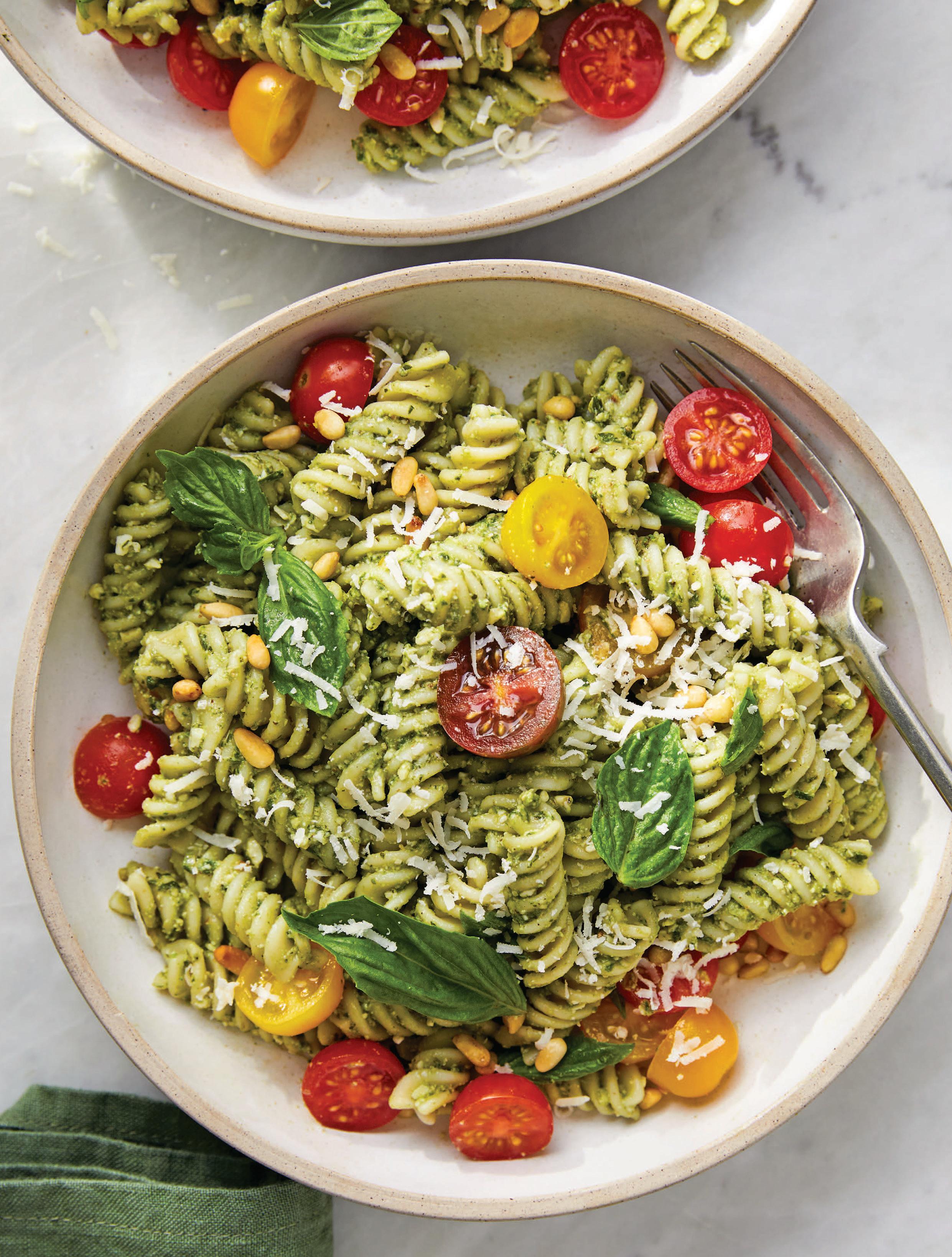
Recipe on page 13
35 min prep time serves 4

Get a boost of health-supporting antioxidant polyphenols from this unripe “mother” apple extract. The polyphenols have been shown to support cardiovascular health, blood sugar control, weight management, and immune system health.* Made from apples grown without pesticides or harsh chemicals.
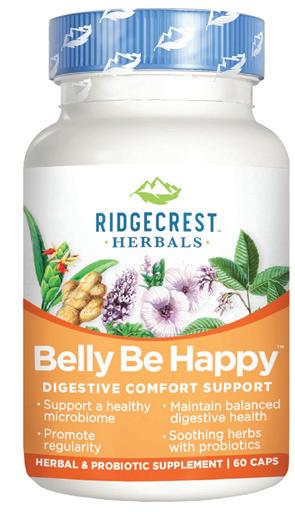
Get daily digestive support with this combination of gentle herbs and probiotics.* Ingredients include marshmallow root, ginger, peppermint, slippery elm, and probiotics to help support a healthy microbiome, balanced digestive health, a calm stomach, and regularity.* Perfect for travel and on-the-go lifestyles.

A pure, safe, and certified vegetarian source of omega-3 DHA is now available in chewable form. These mini chewable softgels supply 375 mg algae-based DHA to support brain development and immune system function in kids 3+ years of age.* Natural Berry Lemonade flavor.
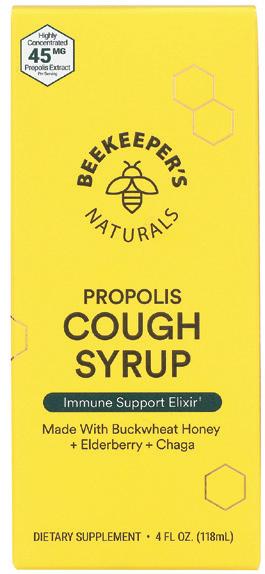
Formulated with buckwheat honey, propolis, and elderberry, these formulas help to soothe your throat and support immune system function.* Daytime Formula helps ease symptoms and improve overall recovery with added chaga.* Nighttime Formula contains added melatonin and L-theanine to help you get much-needed sleep.*
Support your body’s defense against stress, and enhance mental clarity with this comprehensive stress support supplement.* The effective blend of Chinese herbs, mushrooms, and adaptogens helps enhance resilience, maintain healthy immune response, and foster a calm and balanced stress response, supporting overall well-being.*


Discover the Mediterranean secret to health and longevity!* Greek mountain tea is a prized botanical from the mountainous regions of the Mediterranean. For generations, it has been consumed as a beverage for its ability to support resilience and longevity.* Now it is available in convenient capsule form to support digestive and detoxification functions, and healthy inflammation response.* Available as Original formula or With Bacopa.
This magnesium formula provides a high concentration of hydrogen, which may help to support oxidative stress and mitochondrial health.* The advanced formulation harnesses the natural reaction of magnesium and water to create a supplemental hydrogen concentration in water or any non-carbonated beverage. Hydrogen is a highly effective yet gentle antioxidant that targets harmful hydroxyl radicals in your system, while at the same time supporting cellular balance and promoting proper gene expression.*
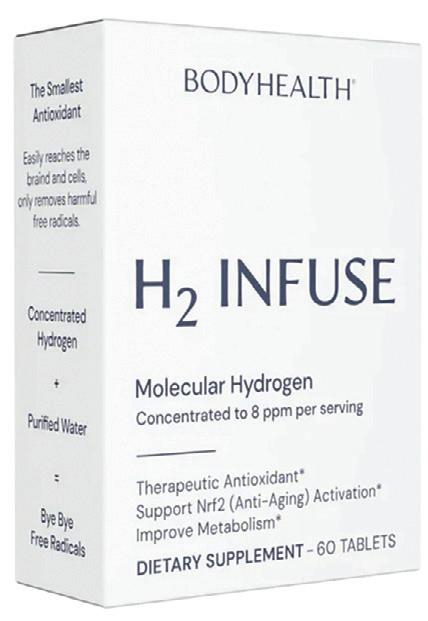
Chances are, you don’t eat a perfect diet every single day. Chances are, you have some form of stress in your life. For just these two reasons, a daily multivitamin may be a good supplement to consider. Multivitamins are supplements providing essential vitamins and minerals. They are formulated to be taken on a daily basis. These formulas can help fill in nutritional gaps in the diet. Studies have repeatedly shown that the standard American diet does not always supply all the nutrients needed to remain truly healthy. Insufficient intake of nutrients can increase susceptibility to illness and even chronic diseases such as diabetes, age-related macular degeneration, and heart disease. A multi ensures sufficient doses of nutrients to maintain health. Vitamins do not, however, take the place of, or make up for, an unhealthy diet. They are meant to be used as a companion to a healthy diet to help fill in nutritional gaps or give a boost in nutrients when needed.

A dizzying array of multivitamins are available, so how do you know which one to take? When looking for
Bluebonnet
MultiOne
Single daily multiple with B Complex 25 and Albion chelated minerals.
Easy to swallow vegetable capsules.
Original or Iron Free.
a multivitamin, utilize these 3 steps to find the right multi for you:
q Answer some basic questions. Do you want a one-a-day formula? Do you want tablets, capsules, or liquid? Do you want a formula that is gender specific, formulated specifically for the needs of men and women? This will help narrow the choices.
r Read labels. Many supermarket brands have added artificial colors or sweeteners These are unnecessary ingredients for a supplement. Many also use cheap forms of nutrients that research has shown to be poorly assimilated in the body. You might be surprised that a leading supermarket brand of multivitamin uses synthetic vitamin E, artificial colors, and artificial flavors. Look for multivitamins that are manufactured according to high standards and that include quality ingredients in forms that are easy to digest and assimilate.
s Ask questions. Find a reputable store where you can ask for help in selecting a mulivitamin/mineral supplement. Knowledgeable staff can help identify the best options available based on your personal needs. ●

Get a burst of energy from this multivitamin and mineral with whole food concentrates.* Provides nutrients that support the immune system.*
Easy to absorb liquid with a natural Tropical Fruit flavor.


Vitamin C plays a role in the body’s immune system by jump-starting white blood cell activity. Megadoses (more than 500 mg per day) have not been shown to eliminate cold and flu, but they do appear to reduce the severity and length of colds for some people. Recommended Daily Allowance (RDA) for vitamin C is 90 mg for males and 75 mg for females ages 19+.
Vitamin C can be found in many fruits and vegetables, including bell peppers, citrus (grapefruit, lemons, oranges), cruciferous vegetables (broccoli, Brussels sprouts, cabbage, cauliflower), strawberries, tomatoes, and white potatoes. Since vitamin C can be destroyed by heat, applying a quick cooking method (like blanching or stir-frying) can help foods retain this nutrient.
Zinc has the potential to enhance immunity, but getting an early start with this cold-busting nutrient is the key to success—one study found that patients who used zinc lozenges within the first 24 hours of a cold recovered three times faster than those who took a placebo.
While zinc deficiency is uncommon in the US, older adults may be at risk of missing the mark—RDA for zinc is 11 mg for males and 8 mg for females ages 19+. The best food sources of zinc include fish, meat, and
seafood, with oysters being the food highest in zinc. Most people get their zinc from beef, as well as eggs and dairy. Fortified breakfast cereals, beans, nuts, and pumpkin seeds are good plant-based sources of zinc.
This vitamin helps to prevent infections by maintaining the body’s barriers (skin, lungs, and the linings of the mouth and throat). While a good quality multivitamin/ mineral supplement probably has adequate amounts of vitamin A, many holistic practitioners recommend higher doses for strong immunity. The RDA for vitamin A is 900 micrograms (mcg) (3,000 IU) for men and 700 mcg (2,333 IU) for women 19+. (Note: High doses of vitamin A are not recommended for expectant or nursing mothers; talk to your doctor.)
Vitamin A is also present in many foods, including leafy green vegetables (broccoli, kale, spinach), orange and yellow vegetables (carrots, pumpkin, sweet potatoes, summer squash), beef liver, cantaloupe, eggs, fish oil, mango, milk, tomatoes, and some fortified foods. ●




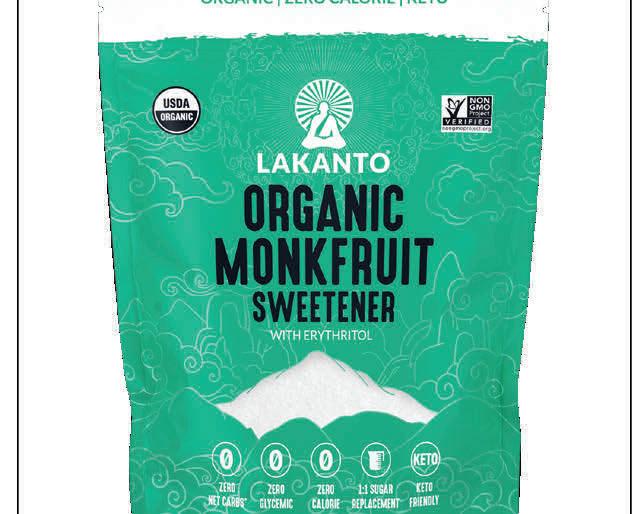
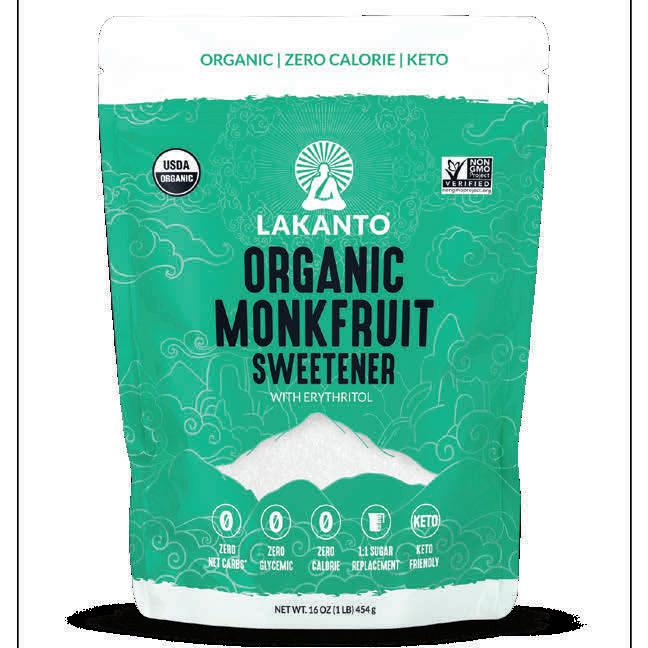


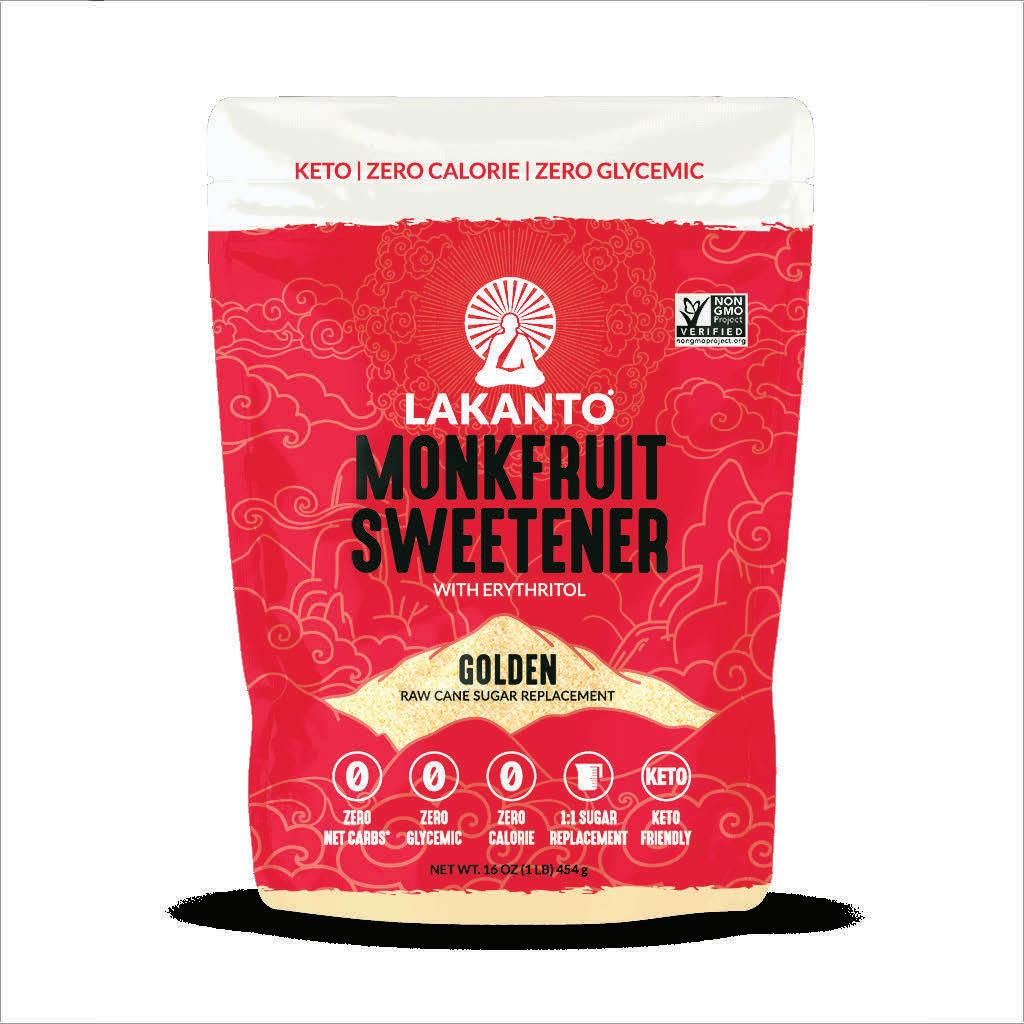

Green tea, a product of the Camellia sinensis plant, packs a punch. It’s high in flavonoids (naturally occuring chemicals found in plants), which promote cardiac health by lowering bad cholesterol and reducing blood clotting. Its abundance of polyphenols—micronutrients with antioxidant properties—help to control free radicals that cause age-related cell damage. One of its polyphenols, epigallocatechin gallate, may lower Alzheimer’s disease risk by limiting the formation of

beta-amyloid plaques.
Green tea has been linked to better working memory, lower blood pressure, weight loss, and slowing the progression of certain cancer cells, including those of pancreatic cancer.
To up the benefits, try matcha, a form of green that is made from the entire leaves of tea bushes and is cited as having many more antioxidants than regular green tea.
Made from the same plant as green tea but with leaves dried and fermented, black tea provides many of the same benefits, including helping to fight inflammation, supporting the immune system, promoting heart health, and aiding blood pressure management.

Black tea consumed after a meal has been associated with lower blood sugar levels. Elevated blood sugar can bring on health issues including Type 2 diabetes, obesity, cardiovascular disease, kidney failure, and depression. This tea may also support the growth of good gut bacteria and inhibit the growth of bad—along with helping to repair the lining of the digestive tract.
Typically, black tea has more caffeine than green tea, so keep that in mind if you need an extra energy jolt. ●
SELECTED SOURCES “The best teas to drink for your health,” https://health. ClevelandClinic.org, 8/13/21 • “Evidence-based health benefits of black tea” by Autumn Enloe, 6/7/22, www.HealthLine.com • “The hidden health benefits of tea,” www.PennMedicine.com, 4/4/22 • “What are the best teas for health?” by Maria Cohut, www.MedicalNewsToday.com, 4/16/18
Sustains the respiratory system by combining 13 perfectly-balanced herbs, which support free breathing and help the body balance mucus levels.*

t s















(Angelica Sinensis)
(Angelica Sinensis)
Chinese Angelica
Chinese Angelica
Dong Quai is one of the most common TCM herbs for hair growth. It a ects the Vascular Endothelial Growth Factor (VEGF), supporting blood flow.*
Dong Quai is one of the most common TCM herbs for hair growth. It a ects the Vascular Endothelial Growth Factor (VEGF), supporting blood flow.*
(Asparagus Cochinchinensis)
(Asparagus Cochinchinensis)
Chinese Asparagus
Chinese Asparagus
Chinese Asparagus is known as a lung tonic recognized for its potential to help support the body moisten and gently cleanse the lungs and respiratory tissues.*
Chinese Asparagus is known as a lung tonic recognized for its potential to help support the body moisten and gently cleanse the lungs and respiratory tissues.*
(Scutellaria Biacalensis)
(Scutellaria Biacalensis)
Chinese Skullcap
Chinese Skullcap


Huang Qin is one of the most widely-used herbs in Chinese medicine, particularly as support for the bronchioles and the larger respiratory system.*
Huang Qin is one of the most widely-used herbs in Chinese medicine, particularly as support for the bronchioles and the larger respiratory system.*
(Ophiopogon Japonicus)
(Ophiopogon Japonicus)
Ophiopogon
Ophiopogon
Ophiopogon helps restore the human system's essential moisture and bodily fluids. It is especially e ective in bringing moisture back to the lungs.*
Ophiopogon helps restore the human system's essential moisture and bodily fluids. It is especially e ective in bringing moisture back to the lungs.*
(Wolfiporia Extensa)
(Wolfiporia Extensa)
Poria Sclerotium
Poria Sclerotium
Poria, which contains multiple vitamins and other nutrients essential to healthy cardiac function and blood circulation, is used in TCM to rid the body of excess "dampness."*
Poria, which contains multiple vitamins and other nutrients essential to healthy cardiac function and blood circulation, is used in TCM to rid the body of excess "dampness."*
Sustains the respiratory system by combining 13 perfectly-balanced herbs, which support free breathing and help the body balance mucus levels.*

With the days growing shorter, people who suffer from seasonal affective disorder, aka SAD, may be falling into their annual winter funk. The good news: Key nutrients and supplements may help beat back seasonal blues. Read on to learn more.
Limited daylight hours mean limited sunshine—and that translates to less vitamin D for people who depend on direct sunlight to get their daily dose. Low levels of vitamin D have been linked to depression, so boosting intake of this key vitamin may be in order during months when the sun rises late and sets early.
The best food sources of vitamin D are fatty fish (salmon, sardines, swordfish, and tuna), as well as fish oils. Smaller amounts of vitamin D can be found in beef liver, cheese, and egg yolks, as well as certain types of mushrooms. Some foods have vitamin D added
to them, especially breakfast cereals, dairy and plant milks, and orange juice. Vitamin D can be found in most multivitamins and as a stand-alone supplement.
Omega-3 fatty acids may help to reduce the symptoms of mild to moderate depression. Omega 3s are key to brain function, and people with depression may have low levels of the omega 3s eicosapentaenoic acid (EPA) and docosahexaenoic acid (DHA).
Good food sources of omega 3s include fish and other seafood (herring, mackerel, salmon, sardines, and tuna); nuts and seeds (chia seeds, flaxseeds, and walnuts); and some plant oils (canola oil, flaxseed oil, and soybean oil). Some brands of eggs, juice, milk, and yogurt are fortified with omega 3s. Omega-3 supplements like cod liver oil, fish oil, krill oil, and plant-based algal oil (derived from algae) are also available.
St. John’s wort has been shown to help people with mild to moderate (but not severe) depression. Studies show it may work as well as prescription medications, without some of the side effects. Research also indicates that St. John’s wort is even more effective in treating SAD when paired with light therapy.
St. John’s wort should not be taken with certain antidepressant medications (like SSRIs). It may also weaken the effects of other prescription medications like birth control pills and blood thinners, so talk to your doctor before adding this herb to your regimen.
Magnesium: In patients with depression, there appears to be a strong link to blood serum magnesium levels. Magnesium regulates inflammation, and it’s also known to affect brain biochemistry, which is evident in pathways linked to depression. Foods high in magnesium include almonds, black beans, cashews, edamame (soybeans), peanuts, pumpkin seeds, soymilk, and spinach. Some multivitamin/mineral supplements have low amounts of magnesium, so be sure to check products labels to make sure you’re getting enough of this important mineral.
Probiotics: While calling for additional clinical trials, emerging research has found small but significant
effects of probiotics for depression and anxiety. The “good,” or healthy, bacteria in the gut, known as probiotics, can be found in certain types of fermented foods, like yogurt, kefir, kimchi, kombucha, sauerkraut, sourdough bread, and tempeh. Probiotic supplements are also available.
Melatonin: When seasons change, the levels of melatonin in your body may change as well. More studies are needed, but supplementation with melatonin may provide relief to some people with depression that comes on in the cold months. Melatonin supplements are widely available, but this naturally occurring hormone can also be found in foods like eggs, fish (salmon and sardines), milk, and nuts (almonds and pistachios).
Remember, supplements can sometimes interact with medications, and severe depression should be treated by a doctor. Check with your physician to determine the best course of action and make this winter a happy one. ●
SELECTED SOURCES “Efficacy of omega-3 PUFAs in depression: A metaanalysis” by Y. Liao et al., Translational Psychiatry, 8/5/19 • “Foods high in melatonin,” www.WebMD.com, 11/14/22 • “How to get more probiotics,” Harvard Health Publishing, https://health.harvard.edu, 7/26/23 • “Magnesium rich food,” Cleveland Clinic, www.ClevelandClinic.org • “Multivitamin/ mineral supplements,” 6/6/23; “Omega-3 fatty acids,” 2/15/23, Office of Dietary Supplements, National Institutes of Health, http://ods.od.nih.gov • “St. John’s wort and depression: In depth,” National Center for Complementary and Integrative Health, https://nccih.nih.gov • “Vitamin D,” Harvard T.H. Chan School of Public Health, www.hsph.harvard.edu
If you are experiencing emotional distress or thinking about suicide, help is available. The 988 Suicide & Crisis Lifeline provides free and confidential support 24 hours a day, 7 days a week in the US.


You do not need to be suicidal to call—people reach out for many reasons including substance abuse, financial worries, relationships, mental and physical illness, and loneliness. Talking with someone about how you are feeling can save your life.
Call or text 988 to get help, or chat with trained counselors at
Having strong healthy lungs contributes to good overall health. Getting enough oxygen is important since oxygen is carried by the blood to every system throughout the body. Healthy lungs are often better equipped to handle illness and immune challenges. But when asthma, Chronic Obstructive Pulmonary Disease (COPD), or other lung diseases are present, things can be more challenging. In addition to an antiinflammatory diet and an exercise program, nature has provided a variety of plants that can help address symptoms and underlying issues of these health problems.

Mullein is popular herb in the respiratory world. Mullein functions as an antioxidant, anti-inflammatory, and expectorant. It can help relieve inflamed mucus membranes and help the body get rid of mucus and phlegm in the chest and throat. It works in the lungs to soothe bronchioles and open up freer breathing, making it a popular herb for people who have asthma and allergies.
Osha root has traditionally been used by Indigenous peoples of the Southwest to support their respiratory health. It functions as an expectorant and can offer some mild bronchodilation, reducing some constriction in the lungs.

Elecampane has antibacterial properties and works
as a decongestant and cough reliever. It can help soothe irritated lung tissue and acts to suppress a cough. It is often found in combination with other herbs in cough and lung formulas.
Yerba Santa is another herb traditionally used by Indigenous Americans that works as a decongestant to dry respiratory mucosal tissue that is very congested. It is also a mild expectorant, helping to loosen phlegm in the respiratory tract.
Oregano is a great herb to keep on hand for fall and winter respiratory challenges, as well as to take with you when you travel. It is a well-known antimicrobial agent that fights bacteria and viruses, and it may be useful for respiratory tract disorders such as cough, bronchitis, and asthma. ●

Supports lung and bronchial health.*
Specific for longer term use. Includes mullein, elecampane, and other support herbs for respiratory and immune health.*

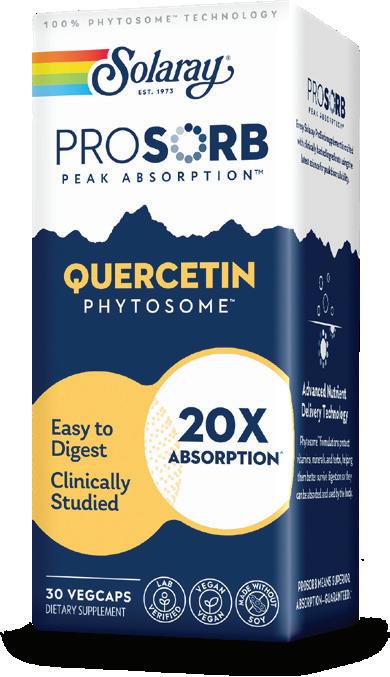



Buy the highest quality and the freshest varieties you can afford. Basically, select the catch of the day.
Your nose knows: Good quality fish will not smell fishy. Most of the varieties you’ll find come as fillets. Look them over. Be sure there’s no gaping or torn flesh. The flesh and skin (if present) should be lustrous and have a moist sheen.
Observe the store’s methods for displaying seafood.
It’s best if fish fillets are perched above ice or on cold blocks, rather than floating in liquid.
When buying mussels or clams, be sure the shells are firmly closed or that they close immediately when gently knocked upon.
If you’re nervous about buying fresh seafood, frozen is a convenient option. When properly stored and thawed, frozen varieties may be “fresher” than those found in the store’s seafood case.
40 min prep time serves 6
 From Natasha’s Kitchen by Natasha Kravchik ($29.99, Clarkson Potter, 2023)
From Natasha’s Kitchen by Natasha Kravchik ($29.99, Clarkson Potter, 2023)
For the Shrimp
1½ lb large shrimp, peeled and deveined
½ tsp ground cumin
½ tsp ground cayenne
½ tsp fine sea salt
¼ tsp finely ground black pepper
1 Tbsp extra-light olive oil
For the Pico de Gallo and Guacamole
4 Roma tomatoes, cored and diced
½ English cucumber, diced
½ medium red onion, finely chopped
4 Tbsp freshly squeezed lime juice (from about 2 limes), divided
2 Tbsp extra-virgin olive oil
¼ c chopped fresh cilantro leaves, plus more for garnish
2 large avocados
¼ tsp fine sea salt, plus more to taste
For Assembly
12 corn tostadas
½ head iceberg
lettuce, shredded (about 3 c)
Your favorite hot sauce
Lime wedges
1. Cook the shrimp: In a medium bowl, combine shrimp with cumin, cayenne, salt, and pepper. Toss to combine.
2. In a large skillet over medium–high heat, heat extra-light olive oil. Working in batches if necessary, so as to not crowd the pan, add shrimp in a single layer. Cook for 1 minute per side, or until just cooked through and opaque white. Transfer shrimp to a cutting board and coarsely chop. Set aside to cool.
3. Make pico de gallo: In a large bowl, combine tomato, cucumber, onion, and cooked shrimp. Drizzle mixture with 2 tablespoons of the lime juice, the extra-virgin olive oil, and cilantro. Gently toss to combine and set aside.
4. Make the guacamole: Halve avocados and use a spoon to scoop flesh into a small bowl. Add remaining 2 tablespoons of lime juice and the salt. Use a fork to coarsely mash mixture. Season with more salt, if needed.
5. Assemble the tostadas: Spread guacamole over each tostada. Add some of the shredded lettuce and then the shrimp mixture. Garnish with more cilantro. Serve with hot sauce and lime wedges for squeezing over tostadas.
Per serving: 398 Calories, 28 g Protein, 183 mg Cholesterol, 34 g Carbohydrates, 4 g Total sugars (0 g Added sugars), 9 g Fiber, 19 g Total fat (3 g sat), 405 mg Sodium, ★★★★★ Phosphorus, ★★★ Vitamin K, ★★ Vitamin B6, C, Folate, Magnesium, Potassium, Zinc, ★ Vitamin A, B1 (thiamine), B2 (riboflavin), B3 (niacin), E, Calcium, Iron
continued from page 27
When you bring fresh fish fillets home, place them in the coldest part of the fridge away from the door. Or store them with ice. Be sure the fish doesn’t directly touch the ice.
Store mussels and clams in the refrigerator, placed in a dish or bowl covered with moist paper towels or a clean, damp dish towel. Periodically drain any liquid away from the seafood. They will last for about a day or two when stored in this manner.
If you haven’t had much experience cooking seafood, it’s easy to be intimidated. The more you experiment with this healthy food, the more comfortable you’ll be when preparing it.
One of the most important considerations is timing. Seafood can quickly become overcooked, so keeping a close eye on it is the key to ensuring a properly cooked dish. ●

Recommended for whole sea bass, mackerel, trout, and plaice.
1. Preheat oven to 400˚.
2. With a sharp knife, make 4 scores in the fish’s skin. Remove fins with scissors.
3. Rub oil all over the fish. Season inside and outside the fish with salt. Place fish on a baking tray.
4. Bake for 20 to 25 minutes, or until the skin is crispy and the flesh feels firm to the touch. Take care not to overcook the fish, or it will be dry.
5. Serve with a drizzle of oil and lemon wedges.
Recommended for pieces of cod, salmon, haddock, or hake.
1. Season with salt and drizzle with a little oil.
2. Heat a nonstick frying pan over medium heat. Place a piece of fish skin-side down and fry for 2 to 3 minutes, or until fillets are opaque at their edges.
3. Gently turn fillet over and fry for an additional 2 to 3 minutes, or until firm to the touch.
4. Serve with lemon wedges.
Recommended for salmon, sea bass, hake, gray mullet, red mullet sea bream, and red snapper.
1. Preheat oven to 400˚.
2. Cut out 1 large piece of parchment paper about 15x16 inches. Fold paper in half to crease it. Open it and lay it flat down.
3. Season fish with salt and drizzle with oil. Place fish on one side of the crease. Add slices of red chili pepper or lemon on top of the fish.
4. Fold parchment, making small overlapping pleats to seal the open sides and create a half-moon-shaped packet.
5. Place on a rimmed baking sheet. Bake about 10 minutes.
Recommended for delicate fish fillets, as well as red snapper, sea bream, sole, and red mullet.
1. Season 2 medium-size fillets with crushed fennel seeds or cayenne pepper. Brush with melted butter.
2. Place fish into a steamer. Steam over low heat for 3 to 4 minutes, or until cooked through.
3. Serve with a squeeze of lemon.

Safe for everyone, these nonsugary items last longer than candy and snack foods, and they’re way more fun.
• Glow sticks
• Stickers
• Pencil erasers
• Key chains
• Balls
• Fake mustaches
• Pirate eye patches
• Bookmarks
• Mini notepads
• Plastic spider rings


Everyone loves Halloween parties, but what about all that junk food? Here are some fun and healthy snack ideas sure to get your guests in a spooky mood.
Smaller is better: Keep consumption under control by offering “fun-size” candies, small cookies, mini muffins, and bitesized brownies.
Get creative with color: Because of their bright and festive orange color, carrots, oranges, and orange bell peppers are perfect for the holiday when arranged on a platter. Other healthy choices to add to the spread include apple
chips, granola, popcorn, and toasted pumpkin seeds.
Mummy pizzas: Spread pizza sauce over split whole-grain, toasted English muffins. Lay strips of string cheese over to make a mummy face. Decorate with sliced black olive eyes. Bake until cheese melts.

Spooky deviled eggs: Make your favorite recipe for deviled eggs. Place green sliced olives with pimentos in the yolk area to create an eyeball. Add thin slices of red pepper strips around the eye to give it a bloodshot look.

Jack-o’-lantern peppers: Slice off the tops of raw bell peppers.
Carve eyes, noses, and mouths into peppers to create faces. Stuff with sliced vegetables and your favorite dip.
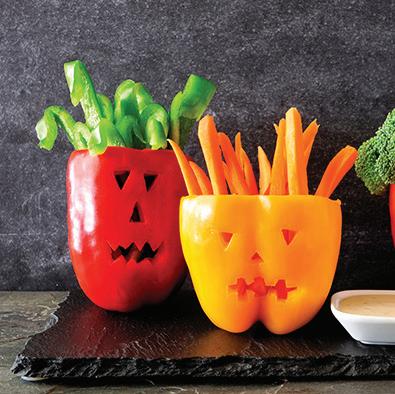

Orange pumpkin treats: Peel skin from oranges but keep the fruit intact and whole. Push a small piece of celery or other green vegetable into the top of each orange to create stems. Arrange festively on a platter. ●
SELECTED SOURCES “How to have a healthy Halloween,” American Heart Association, www. heart.org • “Tips for a healthy Halloween,” American Academy of Dietetics and Nutrition, www.EatRight.org, 10/17/22
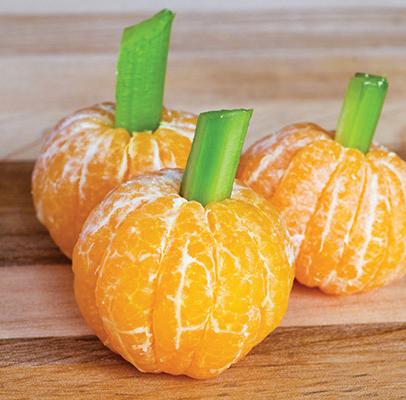
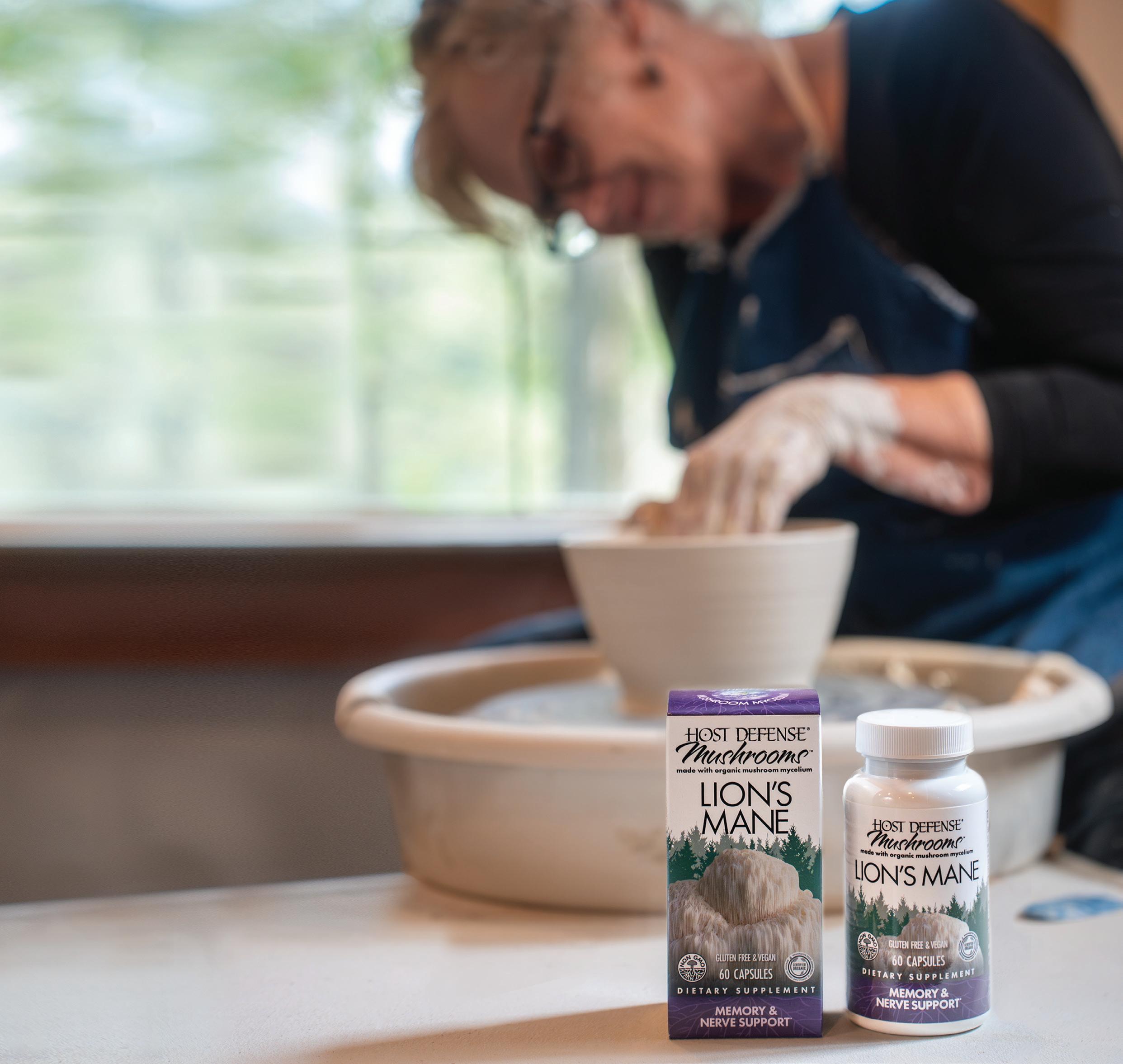

Fluoride free toothpaste with baking soda, neem, and tea tree oil.
Neem neutralizes bacteria while cleansing and removing impurities.
Freshens breath with the minty taste of pure wintergreen.
Quicksilver Scientific Performance Cardio+
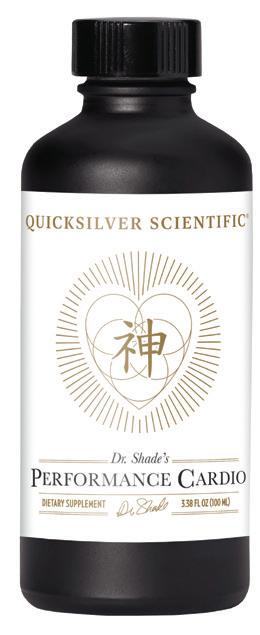
Advanced whole-body circulation formula.*
Formulated to support blood flow and oxygenation to optimize health.*
Herbal blend with L-citrulline.
Doctor’s Best Nattokinase, 2,000 FUs

Helps support cardiovascular health.*
Helps maintain normal fibrinogen levels in blood to support circulatory system health.*
Enzyme derived from natto, a traditional fermented soy food.
Natural Path Silver Wings Colloidal Silver, 500 ppm

Immune support.*
Higher strength, so fewer doses needed.
Small silver particle size.
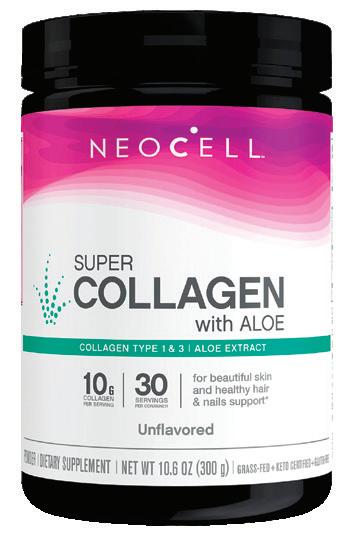
Supports healthy skin, hair, and nails.*
Contains aloe vera leaf gel extract, known to retain moisture.*
Supplies 10 grams of collagen, which provides amino acids for healthy skin.*
Belle + Bella
Flora Fem
Women’s daily probiotic formula.* Supports vaginal, immune, and digestive system health.*
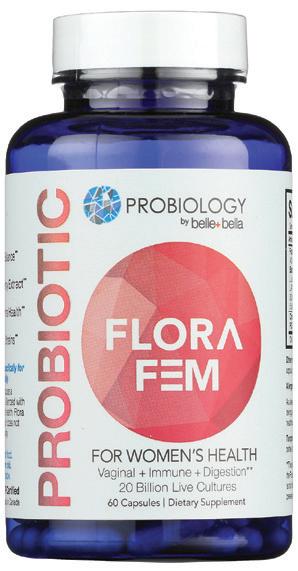
Prebiotic + probiotic + cranberry + folic acid.
No refrigeration required.
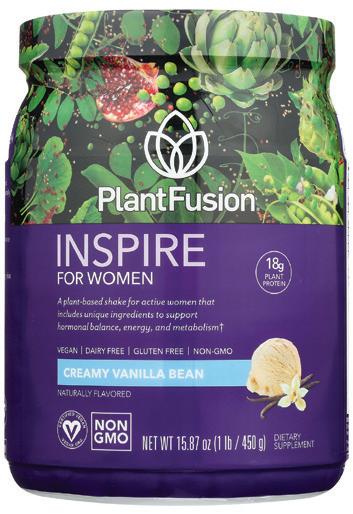
Protein powder with ingredients to support hormone balance, energy, and lean muscle.*
Soy free plant-based protein. With MCT and amino acids for energy support.*
Plus ashwagandha, L-theanine, and pomegranate for hormonal balance.*
Ollois
Arnica Montana 30c
Traditionally used for pain from muscle soreness, stiffness, swelling, and bruises.*
Organic, lactose free formula. Plant-based, vegan formula.


Warming Ayurvedic beverage with turmeric.
Spiced, slightly sweet adaptogen blend with turmeric, maca, goji berry, boswellia, and ginger.



Provides immune and joint support.*




Just pour, mix with your favorite milk, and serve.
*These statements have not been evaluated by the Food & Drug Administration. These products are not intended to diagnose, treat, cure, or prevent any disease. This information is presented as general information and is not meant to replace medical advice. Because persons and circumstances can vary, self treatment may not be right for you. Consult a qualified health care practitioner for advice pertaining to any particular person or case or before beginning any new exercise, diet, or supplementation program. Use products only per label direction.